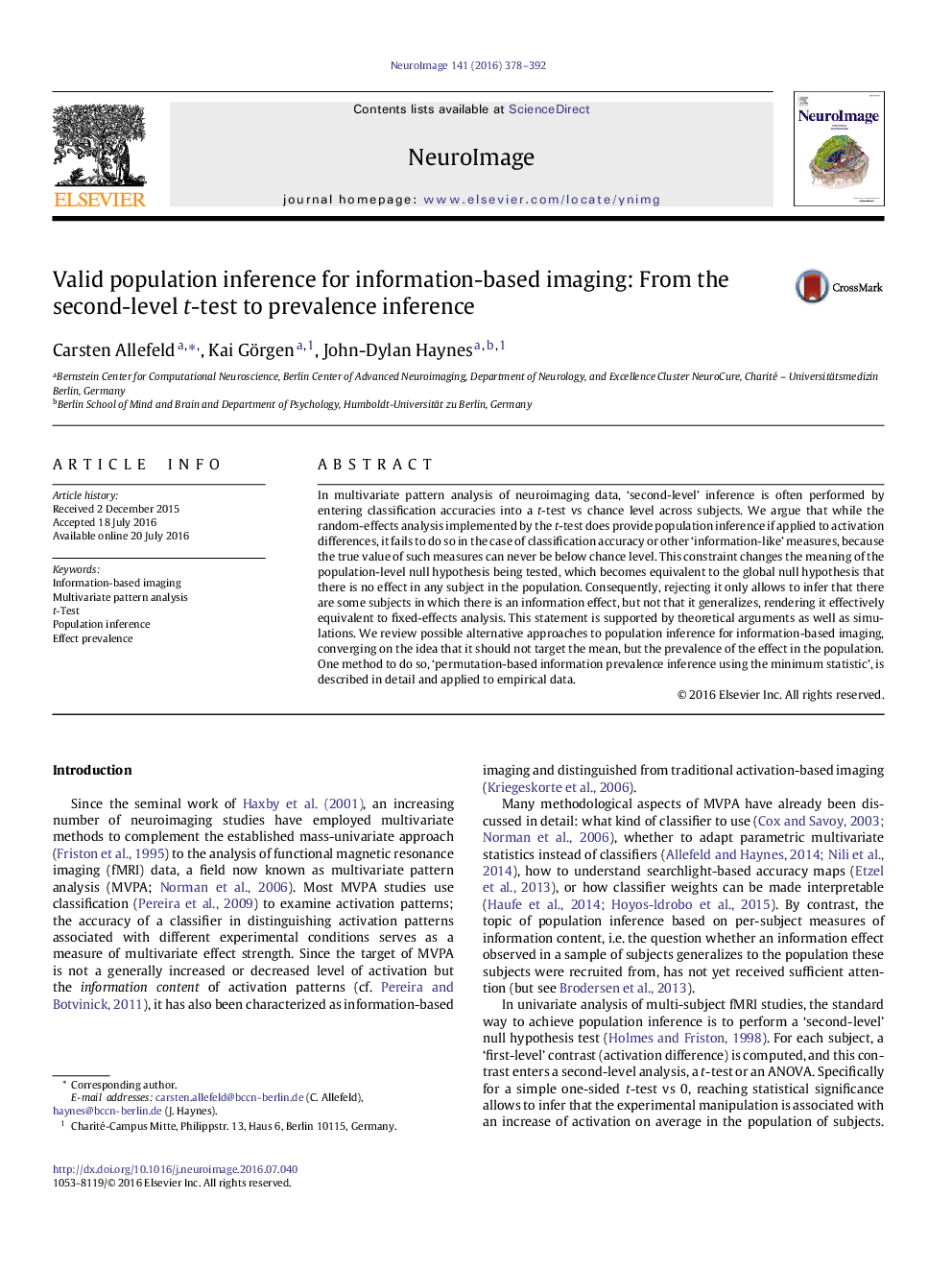| Article ID | Journal | Published Year | Pages | File Type |
|---|---|---|---|---|
| 6023137 | NeuroImage | 2016 | 15 Pages |
â¢A second level t-test applied to accuracies in MVPA does not provide population inference.â¢The same holds for other measures used in information-based imaging.â¢The reason is that the true value of 'information-like' measures cannot be below chance level.â¢This is in contrast to the use of the t-test in univariate analysis which does support generalization.â¢Population inference in MVPA can be achieved by targeting the effect prevalence instead of the mean.
In multivariate pattern analysis of neuroimaging data, 'second-level' inference is often performed by entering classification accuracies into a t-test vs chance level across subjects. We argue that while the random-effects analysis implemented by the t-test does provide population inference if applied to activation differences, it fails to do so in the case of classification accuracy or other 'information-like' measures, because the true value of such measures can never be below chance level. This constraint changes the meaning of the population-level null hypothesis being tested, which becomes equivalent to the global null hypothesis that there is no effect in any subject in the population. Consequently, rejecting it only allows to infer that there are some subjects in which there is an information effect, but not that it generalizes, rendering it effectively equivalent to fixed-effects analysis. This statement is supported by theoretical arguments as well as simulations. We review possible alternative approaches to population inference for information-based imaging, converging on the idea that it should not target the mean, but the prevalence of the effect in the population. One method to do so, 'permutation-based information prevalence inference using the minimum statistic', is described in detail and applied to empirical data.
